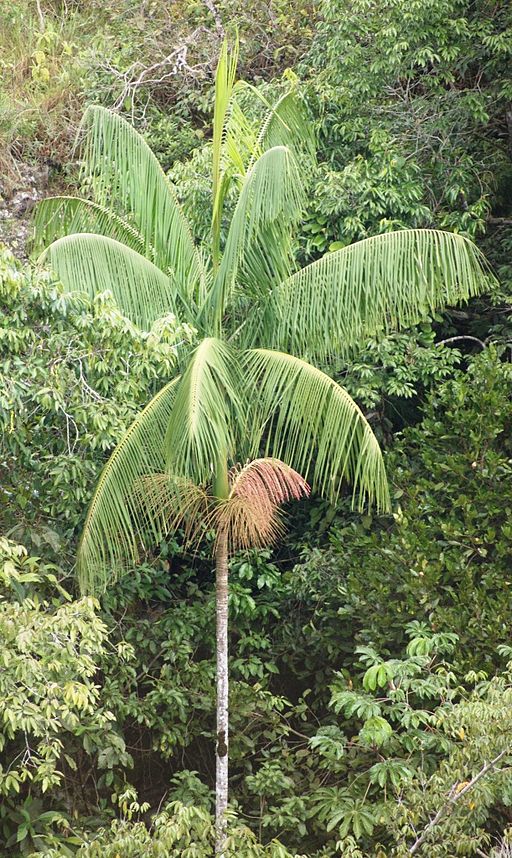Classification System: APG IV
Superregnum: Eukaryota
Regnum: Plantae
Cladus: Angiosperms
Cladus: Monocots
Cladus: Commelinids
Ordo: Arecales
Familia: Arecaceae
Subfamilia: Arecoideae
Tribus: Euterpeae
Genus: Euterpe
Species: Euterpe edulis
Name
Euterpe edulis Mart., 1824
Synonyms
Heterotypic
Euterpe egusquizae Bertoni ex Hauman, Physis (Buenos Aires) 4: 606 (1919), nom. nud.
Euterpe edulis var. clausa Mattos, Loefgrenia 71: 1 (1977).
Euterpe espiritosantensis H.Q.B.Fern., Acta Bot. Brasil. 3(2): 43 (1989 publ. 1990).
Distribution
Native distribution areas:
References
Martius, C.F.P. von , 1824. Historia Naturalis Palmarum 2:33, t. 32.
Links
Govaerts, R. et al. 2018. Euterpe edulis in World Checklist of Selected Plant Families. The Board of Trustees of the Royal Botanic Gardens, Kew. Published online. Accessed: 2018 Dec. 06. Reference page.
International Plant Names Index. 2018. Euterpe edulis. Published online. Accessed: Dec. 06 2018.
The Plant List 2013. Euterpe edulis in The Plant List Version 1.1. Published online. Accessed: 2018 Dec. 06.
Tropicos.org 2018. Euterpe edulis. Missouri Botanical Garden. Published online. Accessed: 06 Dec. 2018.
USDA, ARS, Germplasm Resources Information Network. Euterpe edulis in the Germplasm Resources Information Network (GRIN), U.S. Department of Agriculture Agricultural Research Service. Accessed: 08-Apr-12.
Vernacular names
português: Juçara, Açaí-do-sul, Palmiteiro
Euterpe edulis, commonly known as juçara, jussara (an archaic alternative spelling), açaí-do-sul or palmiteiro, is a palm species in the genus Euterpe. It is now predominantly used for hearts of palm.[1] It is closely related to the açaí palm, the açaí palm has differences though (Euterpe oleracea), a species cultivated for its fruit and superior hearts of palm. The larvae of Caligo brasiliensis are reported to feed on E. edulis.
Although it was formerly widely harvested in Brazil for hearts of palm, it is now uncommon in the wild and no longer harvested commercially due to past over harvesting.This endangering of the species could cause it to fall extinct.[2]
References
Cardoso, S.R.S.; Eloy, N.B. (June 4, 2000). "Genetic differentiation of Euterpe edulis Mart. populations estimated by AFLP analysis" (PDF). Molecular Ecology. 9 (11): 1754. doi:10.1046/j.1365-294x.2000.01056.x. PMID 11091311. Retrieved February 2, 2013.
Brokamp, Grischa (2015). Relevance and Sustainability of Wild Plant Collection in NW South America: Insights from the Plant Families Arecaceae and Krameriaceae. Wiesbaden: Springer Spektrum. doi:10.1007/978-3-658-08696-1. ISBN 978-3-658-08695-4.
Retrieved from "http://en.wikipedia.org/"
All text is available under the terms of the GNU Free Documentation License


